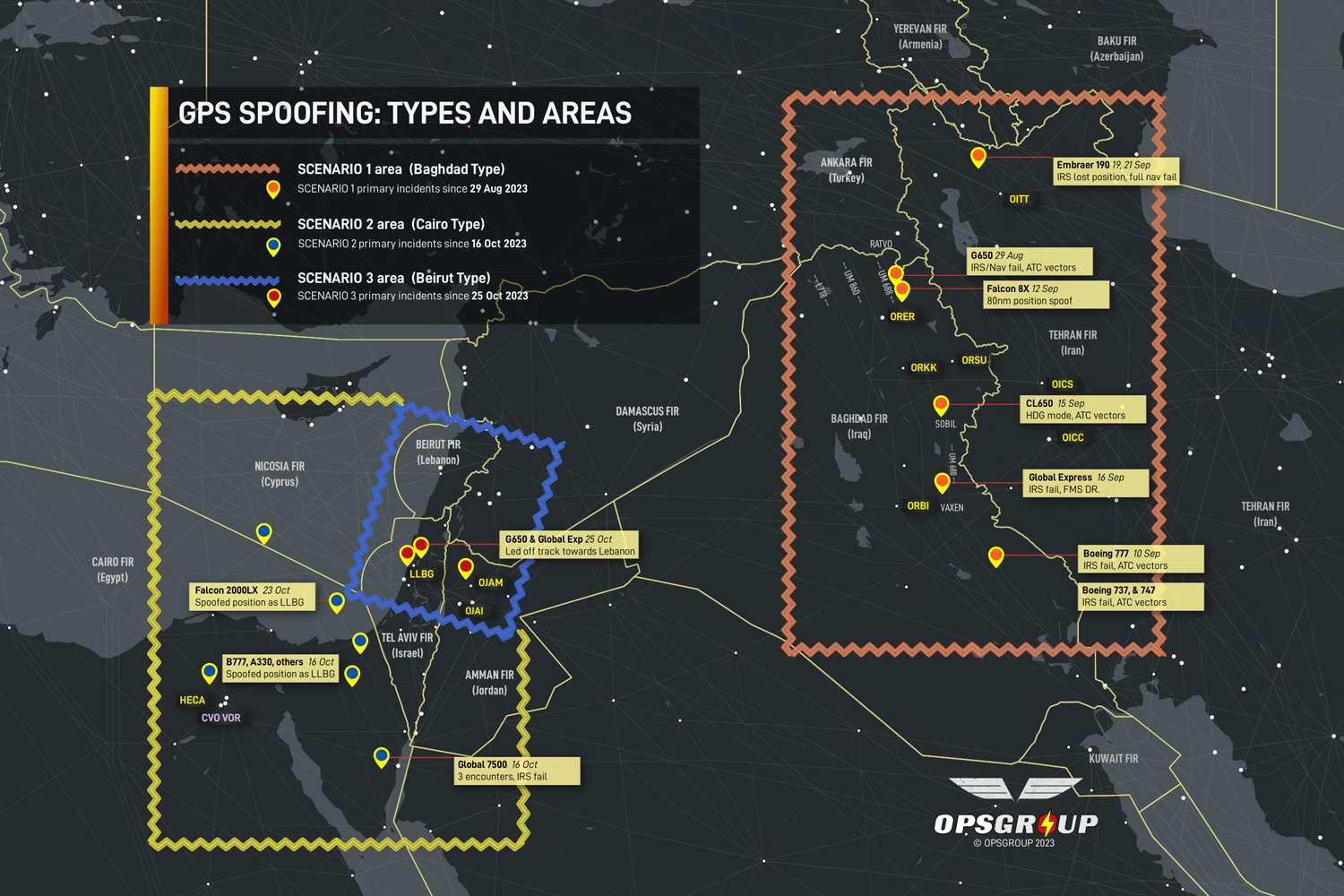The FAA recently released a SAFO that provides information and guidance to operators and manufacturers regarding operations in a GPS/GNSS disrupted environment.

A spate of reported incidents of GPS “spoofing” in certain airspace regions last year unnerved many international business aircraft operators. In spoofing, the attacker simulates a valid GPS signal that an operator’s receiver will track and could put the aircraft in the wrong location.
GPS jamming, which many operators have already experienced, involves overwhelming the relatively weak signals from the Global Navigation Satellite System (GNSS) with far more powerful, ground-based streams, blocking data received by navigational systems on the flight deck.
“The recent jamming and spoofing incidents may pose increased safety of flight risks due to possible loss of situational awareness and increased pilot and regional ATC workload issues,” the SAFO states.
“Due to the increasing frequency of GPS/GNSS disruptions, the FAA recommends flight crews put additional emphasis on closely monitoring aircraft equipment performance for any discrepancies or anomalies, promptly informing ATC of any apparent GPS/GNSS degradation and being prepared to operate without GPS/GNSS navigation systems,” it adds.
The SAFO also includes recommended actions prior to departure and during flight, including:
- Checking for relevant NOTAMs
- Planning fuel contingencies
- When available, use conventional navigational aids
- Be vigilant for any indication that the aircraft’s GPS/GNSS is being disrupted by reviewing the manufacturer’s guidance for that specific aircraft type and avionics equipage
- Remain prepared to revert to conventional instrument flight procedures
- Promptly report disruption to ATC

